Medfield - test PDF

| Title | Medfield - test |
|---|---|
| Author | For All Fakeness |
| Course | Analsis financiaro |
| Institution | Universidad UNIVER |
| Pages | 13 |
| File Size | 238.6 KB |
| File Type | |
| Total Downloads | 284 |
| Total Views | 472 |
Summary
CASE 53MEDFIELD PHARMACEUTICALSTeaching NoteSynopsis and ObjectivesThe founder and largest shareholder of a small pharmaceutical company faces two related decisions: how best to extend the patent life of a key drug and how to respond to a recent takeover offer. A central source of tension in the cas...
Description
CASE 53
MEDFIELD PHARMACEUTICALS Teaching Note
Synopsis and Objectives The founder and largest shareholder of a small pharmaceutical company faces two related decisions: how best to extend the patent life of a key drug and how to respond to a recent takeover offer. A central source of tension in the case is determining the appropriate balance between the firm’s financial objectives and the mission and culture of the founder and employees. The conflicts are made explicit and are given depth with sufficient information to value a drug reformulation strategy and to value the company’s pipeline. Background on the pharmaceutical industry and exploration of issues related to patent-life extensions provide a rich context for discussion. The case can serve multiple purposes. The analytic opportunities allow a careful exploration of the drivers of value, in particular how a going-concern valuation of a company combines both the value of assets already in place (in this case, the drug pipeline) and the net value of future projects (the value created from R&D). The context of the decision adds a strong ethical dimension to the case that allows an exploration of issues related to stakeholders, corporate culture, and corporate missions. In particular, the case is designed to achieve the following learning objectives:
Determine the value of a project given facts related to cash flows.
Determine the value of a set of existing assets of a company and explore the relationship between the value of projects and the value of the company as a going concern.
Articulate the purpose of the company and explore the relationship between company mission and value creation.
Identify the stakeholders of a company and analyze the implications of the firm’s choices to those stakeholders. Confront the ethical aspects of the firm’s resource allocation decisions.
-2Placement in the Curriculum From a quantitative standpoint, the analytical tasks in the case require students to be familiar with the calculation of a net present value of a project given a description of the drivers of cash flows and a discount rate. This case would not be appropriate for introducing these concepts. Rather, the case is intended to sharpen students’ awareness of the fact that such calculations must be considered in the context of a richer set of company imperatives. It also uses those basic calculations as a springboard for discussing issues associated with enterprise valuation—the valuation of a company as a going concern, taking into account the individual valuations of the firm’s various projects. From the standpoint of ethics and stakeholder management, the case provides enough information to suggest that the reformulation—a profitable option for the firm to pursue—may be ethically questionable. This gives students the opportunity to analyze the ethics of the reformulation decision from several different standpoints, including duties/rights/principles, issues of character and company “purpose,” and a consideration of consequences to various firm stakeholders. Therefore, the case can serve a variety of purposes, depending on the curriculum teaching needs. It can be taught with a focus on the financial analytics only, as there is enough carefully constructed quantitative data to meet the learning objectives on quantitative valuation. Likewise, the case can be taught with a focus solely on the ethical quandary of whether to pursue a nonsubstantive reformulation, which would provide renewed patent protection but no additional therapeutic value to patients; this would meet the learning objectives with respect to ethical decision making. Nevertheless, the most optimal use of the case is to address both sets of teaching objectives. A consideration of the cash flows without examining the ethical implications constitutes an incomplete analysis; a discussion of the ethical issues without a full understanding of the financial implications is also incomplete. Ideally, the primary purpose of the case is to facilitate students’ consideration of both sets of issues in the context of one case discussion. As such, the case has been used quite successfully as a joint class taught by both finance and ethics faculty, though it could be executed in the curriculum of either area. The ethics issues in the case are presented in a somewhat subtle manner, and the case is labeled officially as a finance case with an “F” in the case number; this facilitates the instructor’s engagement in the ethical analysis to be unexpected, if so desired. In the joint class setting, the focus of the discussion is initially on the valuation and cash flow mechanics of the reformulation, and, after concluding that the reformulation is quite profitable and thus an obvious choice, much of the remainder of the class is focused on challenging that conclusion on various grounds. The teaching plan outlined below includes both the finance and ethics issues.
-3Suggested Questions for Advance Assignment The following questions can be assigned to the class: 1. What is the financial value that might be created if Medfield decides to pursue the Fleximat reformulation as described in the case? 2. What is the value of Medfield’s existing drugs and drug pipeline? Is the takeover offer price reasonable? 3. Should Johnson recommend accepting the acquisition offer at the given price? 4. What factors should Johnson consider in choosing whether to initiate the reformulation? What factors should Johnson consider in choosing a recommendation regarding the takeover offer?
Supplementary and Related Materials A student spreadsheet (UVA-F-1636X) that facilitates the analysis of the enterprise-level valuation questions is available. A supplemental file containing the analysis in this teaching note is also available (UVA-F-1636TNX). The technical note “Moral Theory and Frameworks” (UVA-E0339),1 which discusses the analysis of ethical issues, may also be useful to both instructor and students.
Hypothetical Teaching Plan This plan addresses both the valuation and ethical questions that arise. The class can be organized around the following sequence of questions. What is the value of Medfield as a company? Assume the reformulation is not pursued. The purpose of this question and analysis is for students to develop an ability to distinguish between the value of assets in place (investments already made) and the value to be created from future investments. This distinction is driven home as the students struggle with two issues: (1) there is no “terminal value” in the cash flows for the existing drugs and (2) research expenditures are clearly not needed to support existing drugs. The analysis builds easily from the student spreadsheet with few technical steps or judgments.
1 Andrew C. Wicks, Jared D. Harris, and Bidhan Parmar, “Moral Theory and Frameworks,” UVA-E-0339 (Charlottesville, VA: Darden Business Publishing, 2008).
-4What is the value that would be created from a reformulation? This question provides an opportunity to consider a specific project and it sets the stage for questions regarding the ultimate drivers of value for a company. What factors explain the value created from the reformulation? Or, what relevant issues are not addressed in the analysis? Who reaps the financial benefits? Who bears the financial costs? Whether one takes the “value drivers” or “omitted factors” approach to this section of the analysis, the point is for students to see that the value of the reformulation to Medfield arises from its ability to sell a virtually identical drug therapy at a price much higher than otherwise would be the case. This is largely a function of Medfield’s ability to market the reformulation. Thus, the value to Medfield can be viewed, to some extent, as a transfer of wealth from patients, who need this drug treatment (or the insurance companies that pay for the drugs), to the company. What should Susan Johnson do? By considering Susan Johnson’s decision, the moral elements of this case and a consideration of economic pressures on decision makers can be discussed. Based on her recommendation, it is possible that Medfield can choose to do any of the following:
Don’t pursue the reformulation and accept the takeover offer.
Initiate the reformulation and accept the offer.
Rebuff the offer but still reformulate.
Rebuff the offer and choose not to reformulate.
Some of these choice represent false distinctions (if they sell immediately, the buyer is likely to reformulate). This allows some consideration of the ethics of letting another person make a choice one might be uncomfortable making.
Case Analysis Basic Medfield valuation From the data given to the students, some basic analysis of the existing projects can be easily developed. These initial steps are sufficient to develop the theme of assets in place versus growth options. A more careful analysis of the magnitude-of-growth options attempts to quantify these benefits in a later section.
-5A preliminary starting point would be to value the future forecast free cash flows. Note that the case is simplified intentionally to facilitate analysis by omitting complications related to depreciation and capital expenditures as well as net working capital. Thus, free cash flow is simply net operating profit after tax (NOPAT). At the 8.5% discount rate, the present value of the forecast NOPAT is equal to $418 million. Exhibit TN1 contains this analysis and others discussed in this section (only the first seven years are presented in the exhibit; the full worksheet is in the supplemental Excel files). This value is far below the offer price and should elicit immediate criticism. That criticism is likely to take one of two forms. First, it will be argued that the cash flows do not have a terminal value nor do they include the cash flows from new products. This point should be conceded but also met with this question: “True, but are the existing assets in place really worth so little?” or “If that is true, then half the firm’s value seems to be in its terminal value or future projects. Does that seem reasonable?” The point is to lead students to the second criticism—that the cash flows include a deduction for R&D, which is not actually a cost of existing products but an investment in new products. Thus, the analysis includes a cost but not the associated benefit. Students can then adjust the analysis by eliminating R&D. (The case makes clear that general and administrative costs should be considered to be variable costs; thus there should be little debate as to whether these might be classified as overhead and therefore ignored in some analyses.) Exhibit TN1 shows the value of the drug pipeline calculated without research expenditures and also (verifies) the value of the research costs stream. This new analysis indicates that existing projects are worth something on the order of $713 million. This suggests the offer does not provide very much in the way of a premium for new products that Medfield might develop. A more detailed analysis of the value of new products should be deferred. The instructor can transition the class at this point by noting that the reformulation of Fleximat essentially represents one possible new product. This project can be considered in detail. Analysis of reformulation The reformulation is mostly an analysis of the marginal impact of the reformulation net of the marginal investments needed. The key elements to the analysis, an example of which is presented in Exhibit TN2, are the following:
Incremental research to develop the reformulation for two years at $35 million per year
Incremental marketing of the reformulation for five years at $25 million per year
Incremental sales as a result of the reformulation
Incremental cost of sales
Incremental regular direct marketing
Incremental general and administrative
-6Students should recognize that no further deduction is needed for R&D. The net effect of the reformulation would be to increase the value of Medfield by about $50 million. Note that some students will simply adjust the full firm valuation for the reformulation and identify the change as the value of the reformulation—which will provide the same result. When discussing the value calculations in this particular section, and in general within this case, it is important to recognize that the discussion is framed as “value created.” There is no reason that this value need be specifically credited to shareholders as is implied by the common framing as “shareholder value.” The point is that this reformulation generates a stream of cash flows to Medfield that, when benchmarked against similar investments available in the market, generates value. By being more careful with the issue of “ownership” of the value that is created, students are encouraged to think more broadly about the stakeholders affected by the decision. Who is the value created for? What are the implications for other stakeholders? Ethical implications To tee up the ethical implications of the reformulation decision, it is helpful to first take a poll of the class on the recommended course of action for Medfield. This establishes the initial positions of the class. One can then dive into issues by calling on a student who voted not to reformulate to justify his or her decision. But it is helpful to outline the decisions first because there are various choices and combinations. A decision tree, such as that on the left side of Exhibit TN3, can be quickly developed (more complex versions are defensible and can be considered—for example, maybe Medfield can reformulate and then sell, which reverses the order, or the decision of a bidder can be considered as well). With the decision tree outlined and the vote taken, one can initiate a broad discussion. As students raise issues, they can be tabulated on the board as an extension of the decision tree (as shown in Exhibit TN3). Essentially, the issues are placed in the context of the effects on various stakeholders of the firm with pros and cons listed. An important learning point itself is to help the students see how many individuals and organizations are affected by the choice. A central issue, of course, is the effect on customers/patients and/or third-party providers who pay. Drive the discussion toward specific impacts when possible. Press students to identify what, exactly, the value of the decisions is for customers/patients. Students may suggest that customers have a choice—they could always choose the former drug over the reformulated drug. This point should be debated in the context of how drugs are promoted, prescribed, and paid for. Do consumers always have a “choice” of which medication to “consume”? What factors complicate that “choice”? After students have mapped out the implications of the decision, move the discussion toward the formulation of criteria for resolving the conflicting impacts of the decision. A way to motivate and/or to codify thinking in this respect is to combine “values” (ethical concerns or considerations that have surfaced in the discussion) with economic “value” (potential returns to be generated). When students are pushed to consider these dimensions, it becomes clear that the
-7students’ spreadsheets and calculations do not capture all the important dimensions of “value” or “values.” As such, the discussion can help illustrate how students must learn to explicitly consider the role of values (beyond the simple consideration of cash flow returns) in their managerial decisions. Although students often want to talk about extreme cases of alignment between economic and other values (e.g., positive NPV activities that are consistent with moral values or negative NPV activities that are also morally reprehensible), the more challenging discussion revolves around the tension arising from misalignment. How should leaders grapple with decisions in which potential returns and ethical values are at odds? The diagram in Figure 1, though oversimplified, can help frame the discussion. Figure 1. Values and NPV framework. INCONSISTENT WITH VALUES
CONSISTENT WITH VALUES
POSITIVE NPV
Difficult (e.g., Fleximat Reformulation)
Easy
NEGATIVE NPV
Easy
Difficult (e.g., Merck’s Mectizan2)
If the primary challenge is how to arbitrate managerial decisions in the two “difficult” quadrants, the introduction of a framework for thinking about ethics can be helpful. A more generalized discussion of moral theory and frameworks can be found in “Moral Theory and Frameworks” (UVA-E-0339). In the context of the Medfield case discussion, instructors can begin to ask questions about principles, consequences, and character. A framework such as the one in Figure 2 can be developed and filled out on the board, depending on student observations.
2 In the 1980s, pharmaceutical-giant Merck pursued the development and the eventual distribution of the drug Mectizan, a therapeutic cure for river blindness. River blindness was virtually nonexistent in the developed world, which meant there was no viable economic market for the drug, and therefore no direct mechanism to recover the costs of development and distribution. Nevertheless, Merck continued to distribute the drug for free, despite the pointedly negative NPV valuation of the project at its inception and its ongoing cost outlays. For more detail, see http://www.mectizan.org.
-8Figure 2. Ethical framework in the context of Medfield. Principles Do no harm. Dishonesty? Maximize profits?
Consequences Good ROI Higher prices for customers Motivation for employees
Character What kind of firm are we? What kind of leader am I? “We Bring Wellness”
The teaching objective of discussing each of these different views of ethics is at least twofold. First, it is important for students to understand that moral analysis employs different lenses, and ethical justification can arise from different standpoints. Second, understanding this can help the students recognize the apparent tensions and conflicts that can occur when the ethical dimensions of Medfield’s reformulation decision are explicitly considered. There are many aspects of this decision, and you will have to control the conversation to reach resolution while at the same time pressing students to increase the depth of their thinking. The following are examples of questions that can further the discussion: 1. For those in favor of reformulation: What “facts” could change your mind and cause you to recommend against reformulation? What about those of you who are against reformulation—under what conditions might you be in favor of reformulation? Why? 2. How would you change your thinking if Medfield’s reformulation approach were more “substantive,” and less cosmetic? 3. Could Medfield use the extra value created by the reformulation to generate more new (and helpful) products? 4. If Medfield were a financial institution, the analogous decision would be whether to steer clients to high-cost funds rather than similar low-cost funds. In that case, would you reach the same conclusion? 5. So what are the key issues here, as raised by our consideration of stakeholders? 6. What factors should we include in our analysis of whether or not to reformulate? Net value of a new drug The discussion of assets in place, when set against the notion of value created from new projects, leads naturally to questions regarding the net value of a new project. In the Medfield context, the question can be phrased as, “What is the net value of a new drug?” Students should already recognize that the value of a new drug is the value of future cash flows from the drug less the value of research that generates the drug. The case provides sufficient information that a reasonable analysis of the value ...
Similar Free PDFs

Medfield - test
- 13 Pages
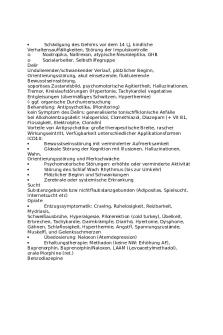
Test - test
- 1 Pages
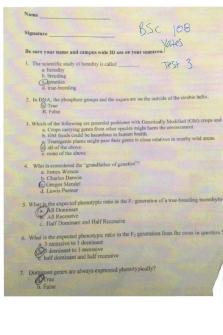
Yates Test 3 - Test
- 7 Pages
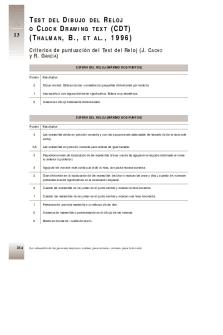
Test-reloj - test
- 4 Pages
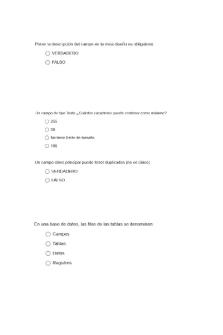
Test Access 2010 - Test
- 6 Pages
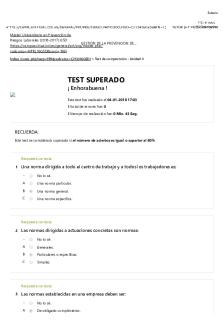
Resultado Test 842 - TEST
- 2 Pages
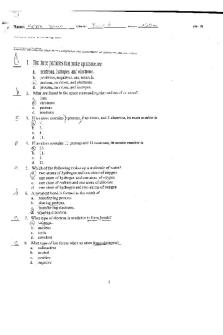
AP. Bio. Test - test
- 4 Pages
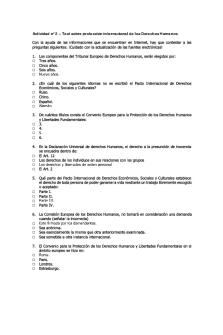
Test
- 4 Pages
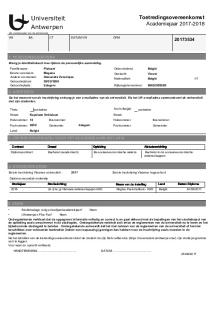
TEST
- 1 Pages

Chapter 4-test - test
- 23 Pages
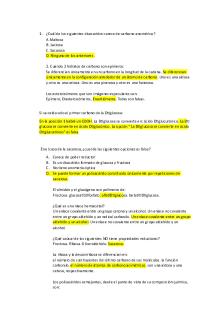
Test preguntas - test
- 4 Pages
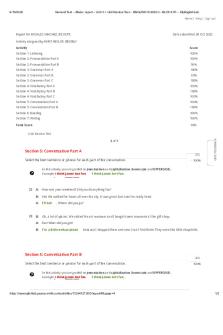
Test 3 - 5 - test
- 2 Pages

PET TEST Full Test
- 35 Pages

Preguntas TEST - CG - Test
- 4 Pages
Popular Institutions
- Tinajero National High School - Annex
- Politeknik Caltex Riau
- Yokohama City University
- SGT University
- University of Al-Qadisiyah
- Divine Word College of Vigan
- Techniek College Rotterdam
- Universidade de Santiago
- Universiti Teknologi MARA Cawangan Johor Kampus Pasir Gudang
- Poltekkes Kemenkes Yogyakarta
- Baguio City National High School
- Colegio san marcos
- preparatoria uno
- Centro de Bachillerato Tecnológico Industrial y de Servicios No. 107
- Dalian Maritime University
- Quang Trung Secondary School
- Colegio Tecnológico en Informática
- Corporación Regional de Educación Superior
- Grupo CEDVA
- Dar Al Uloom University
- Centro de Estudios Preuniversitarios de la Universidad Nacional de Ingeniería
- 上智大学
- Aakash International School, Nuna Majara
- San Felipe Neri Catholic School
- Kang Chiao International School - New Taipei City
- Misamis Occidental National High School
- Institución Educativa Escuela Normal Juan Ladrilleros
- Kolehiyo ng Pantukan
- Batanes State College
- Instituto Continental
- Sekolah Menengah Kejuruan Kesehatan Kaltara (Tarakan)
- Colegio de La Inmaculada Concepcion - Cebu

